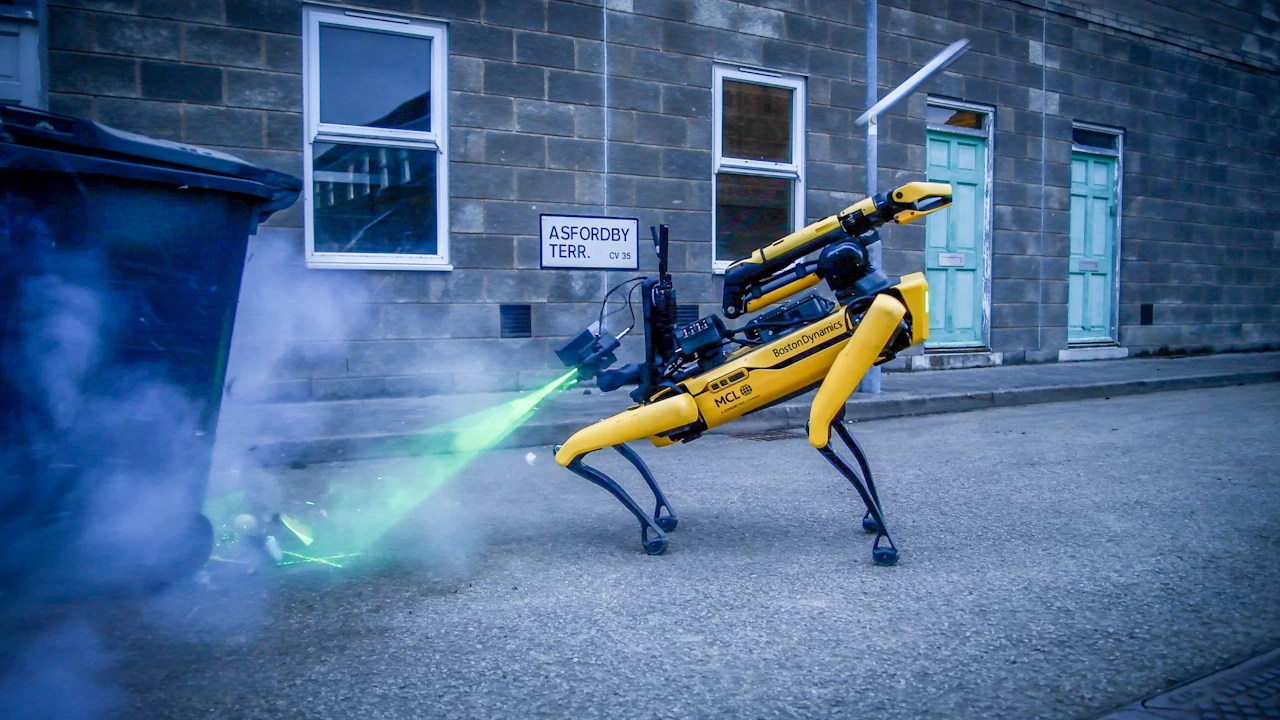We're used to seeing robot dogs doing all sorts of weird things, but how about something to make the world safer? The British Ministry of Defence's answer is using the mechanical mutts to make detecting and defusing bombs safer and more efficient.
Bomb disposal robots aren't exactly new, but they've come a long way since the first one was introduced by the British Army in 1972 to deal with IRA bomb threats. The early ones were little more than battery-powered motorized carts running on tracks, with a remote controlled arm for picking up suspicious packages.
For the first ones, like the Wheelbarrow Mark 7, the job was simply to move the bomb to an armored container and detonate it where it sat. The detonation part was particularly easy because it doesn't take very sophisticated robotics to give a biscuit tin full of Semtex a hard knock. Since then, all sorts of improvements have been added, including high-resolution video cameras, sensor arrays, articulated manipulators, and haptic feedback.
That being said, they've still been basically tracked platforms, though the more sophisticated ones can climb stairs. What the MOD wants is a new generation of bomb disposal robots that are much more agile, intelligent, and can take over many of the tasks of the human operators.
In recent four-day trials conducted by the Defence Science and Technology Laboratory (Dstl), the demolition dogs demonstrated their ability to seek out, detect, and classify bomb threats, as well as defusing them by either using its robotic arm or a shot from a bolt-firing gun to deal with smaller IEDs. During these exercises, a human operator was in the loop, but the AI capabilities of the robot allowed it to take over many of the tasks, allowing for more precise and delicate movements while the operator concentrated on more important aspects of the job.

In addition to improving disposal operations, the robot dog was able to navigate the threat area by itself, negotiating stairs and obstacles as well as opening doors, allowing the operator to remain a safe distance away. Meanwhile, drones were able to assist with not only finding the bombs, but also in monitoring the area to make sure that members of the public were kept well clear.
"This is a great example of how Defence can achieve an advantage through the exploitation of technology, fusing together military and commercial systems to keep our people and country safe from deadly threats," said Chief Science and Technology Officer, Dstl, Prof Andy Bell. "Working in partnership with industry and academia, Dstl is delivering mission success through science and technology advantage."
Source: Ministry of Defence





